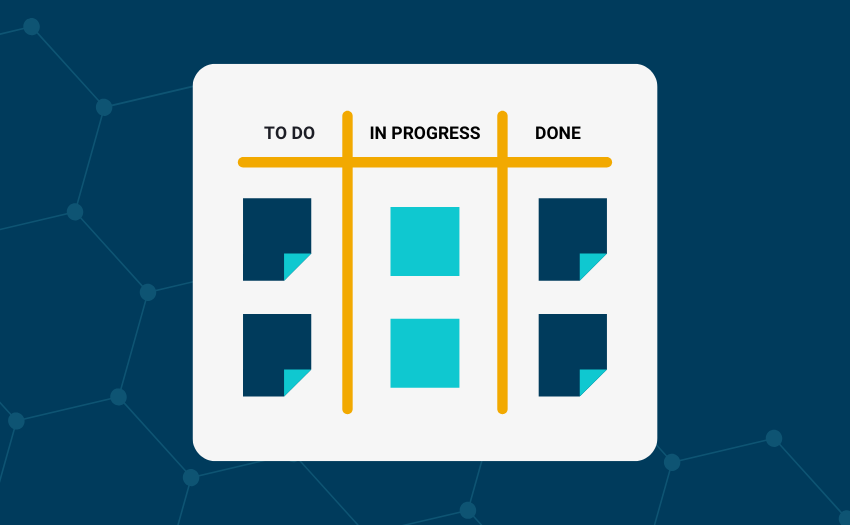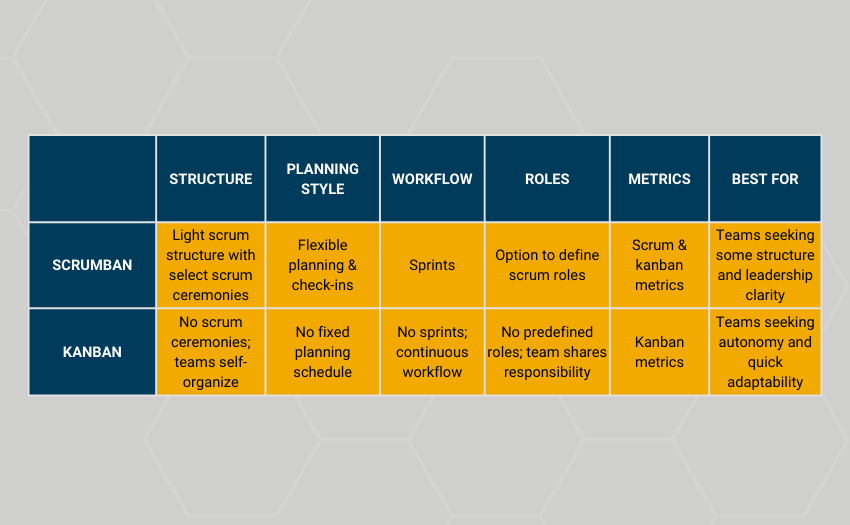Quick Tips
Start with an agile mindset. Scrumban and kanban are both agile frameworks. However, agility starts with your team's frame of mind and how you approach work together. Learn more about how to develop an agile mindset here.
Your workflow can (and should) evolve. Teams change. Priorities shift. It’s normal to grow out of a framework. Adapt your workflow to meet current needs.
Customize frameworks to fit your team. Utilize framework guidelines that make sense for your team and skip those that don't. There is no one-size-fits-all approach.
Stay curious. Try new ways to improve value delivery and workflow. Evaluate and analyze results regularly. Experiment with project management tool options:
Have open conversations. Ask your team about what is and isn’t working. Seek advice from professionals in your network.
Questions to Consider
- What are your current delivery goals?
- How often do your project priorities change?
- How much structure or flexibility do you prefer in the planning process?
- Does your team benefit from clear roles or shared ownership?
- What’s your team's meeting culture?
Conclusion
Scrumban and kanban both offer unique advantages. Scrumban is a hybrid approach that combines elements of the scrum and kanban frameworks. This workflow suits teams that thrive with structure while prioritizing flexibility and customer value delivery.
In contrast, kanban is a visual project management workflow that offers a simple, flow-based system designed to handle shifting priorities with minimal planning. Neither framework is “best.” Instead, evaluate your team’s current needs, priorities, and working style to make a decision. Remember: as your organization evolves, so will your workflow.
Sharpen your team’s workflow with our Agile Project and Delivery Management class. You’ll learn how to deliver projects iteratively, track progress effectively, support your team’s growth, and continuously improve the process.
Download the Agile Project and Delivery Management learning outcomes to learn more.
See you in class.







